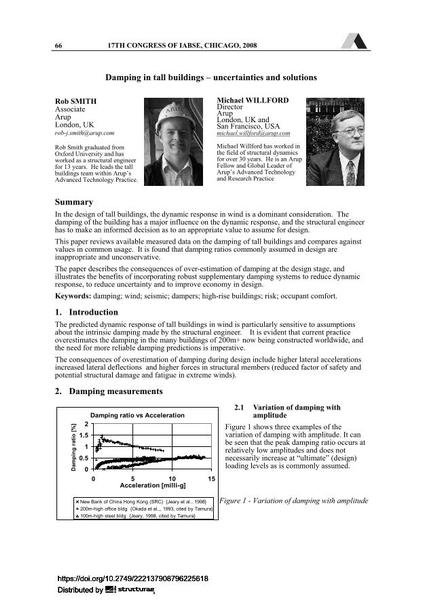Damping in tall buildings – uncertainties and solutions

|
|
|||||||||||
Bibliografische Angaben
| Autor(en): |
Rob Smith
Michael Willford |
||||
|---|---|---|---|---|---|
| Medium: | Tagungsbeitrag | ||||
| Sprache(n): | Englisch | ||||
| Tagung: | 17th IABSE Congress: Creating and Renewing Urban Structures – Tall Buildings, Bridges and Infrastructure, Chicago, USA, 17-19 September 2008 | ||||
| Veröffentlicht in: | IABSE Congress Chicago 2008 | ||||
|
|||||
| Seite(n): | 66-67 | ||||
| Anzahl der Seiten (im PDF): | 8 | ||||
| Jahr: | 2008 | ||||
| DOI: | 10.2749/222137908796225618 | ||||
| Abstrakt: |
In the design of tall buildings, the dynamic response in wind is a dominant consideration. The damping of the building has a major influence on the dynamic response, and the structural engineer has to make an informed decision as to an appropriate value to assume for design. This paper reviews available measured data on the damping of tall buildings and compares against values in common usage. It is found that damping ratios commonly assumed in design are inappropriate and unconservative. The paper describes the consequences of over-estimation of damping at the design stage, and illustrates the benefits of incorporating robust supplementary damping systems to reduce dynamic response, to reduce uncertainty and to improve economy in design. |
||||
| Stichwörter: |
Wind Hochhäuser Dämpfer Risiko Dämpfung
|
||||
